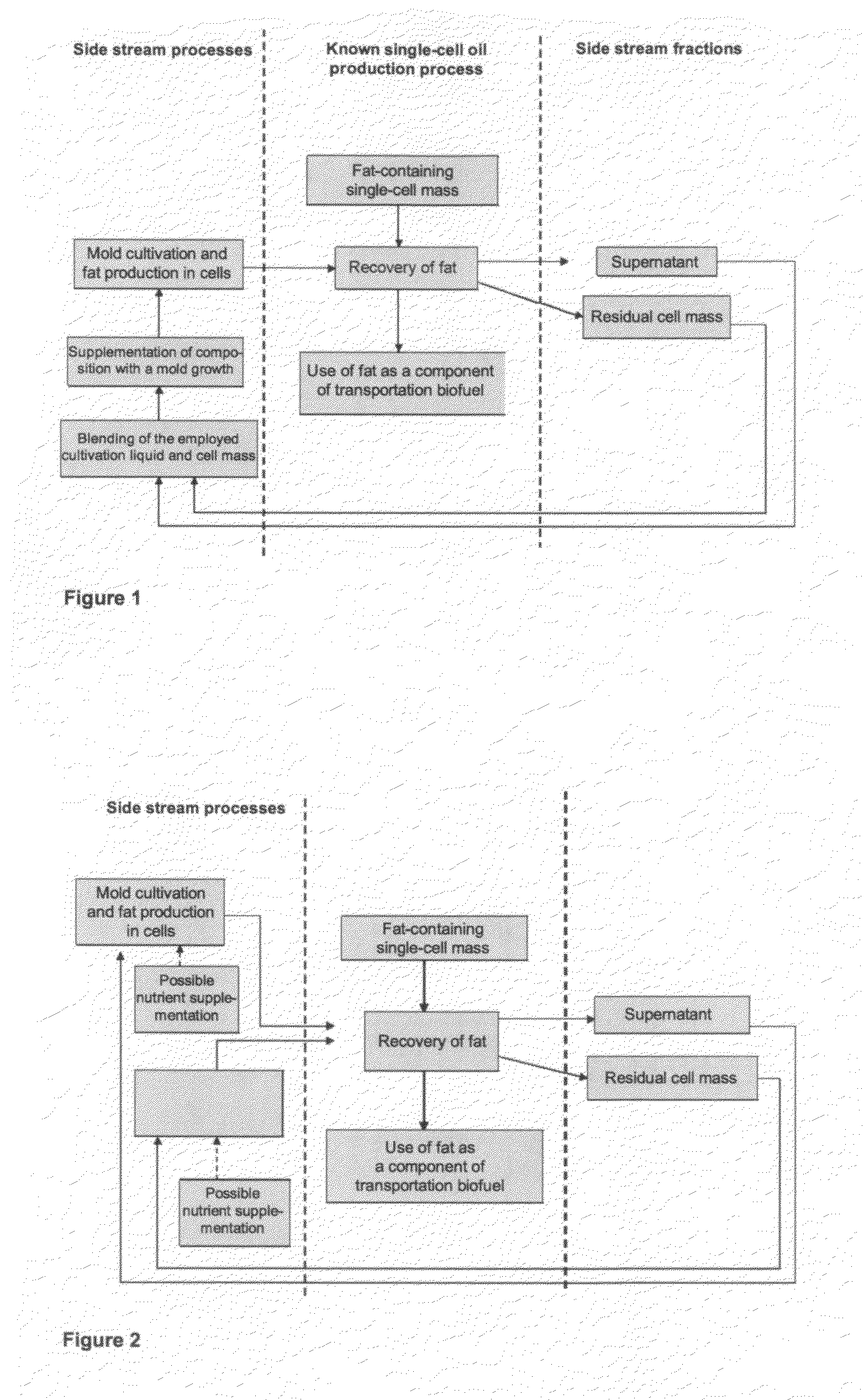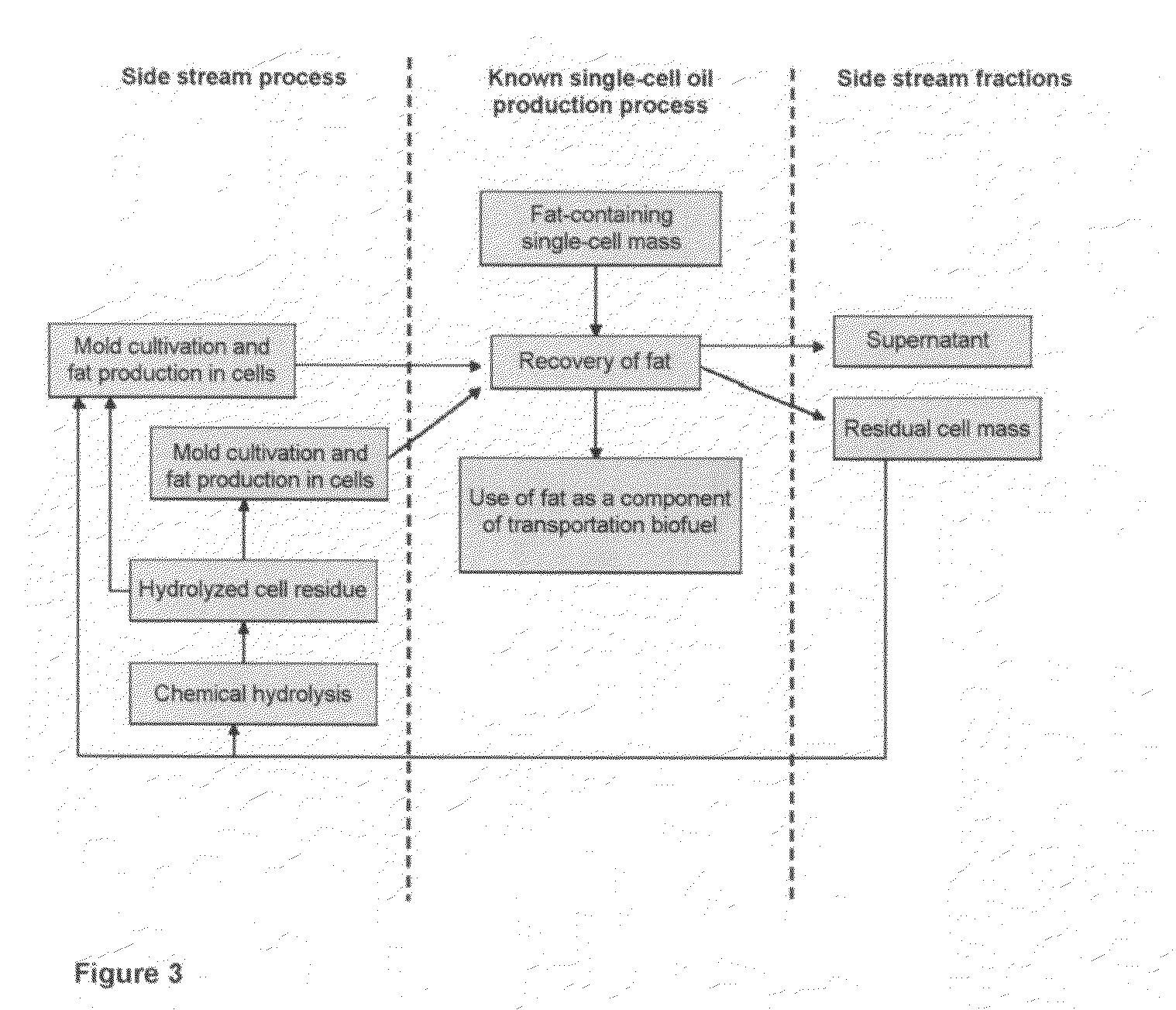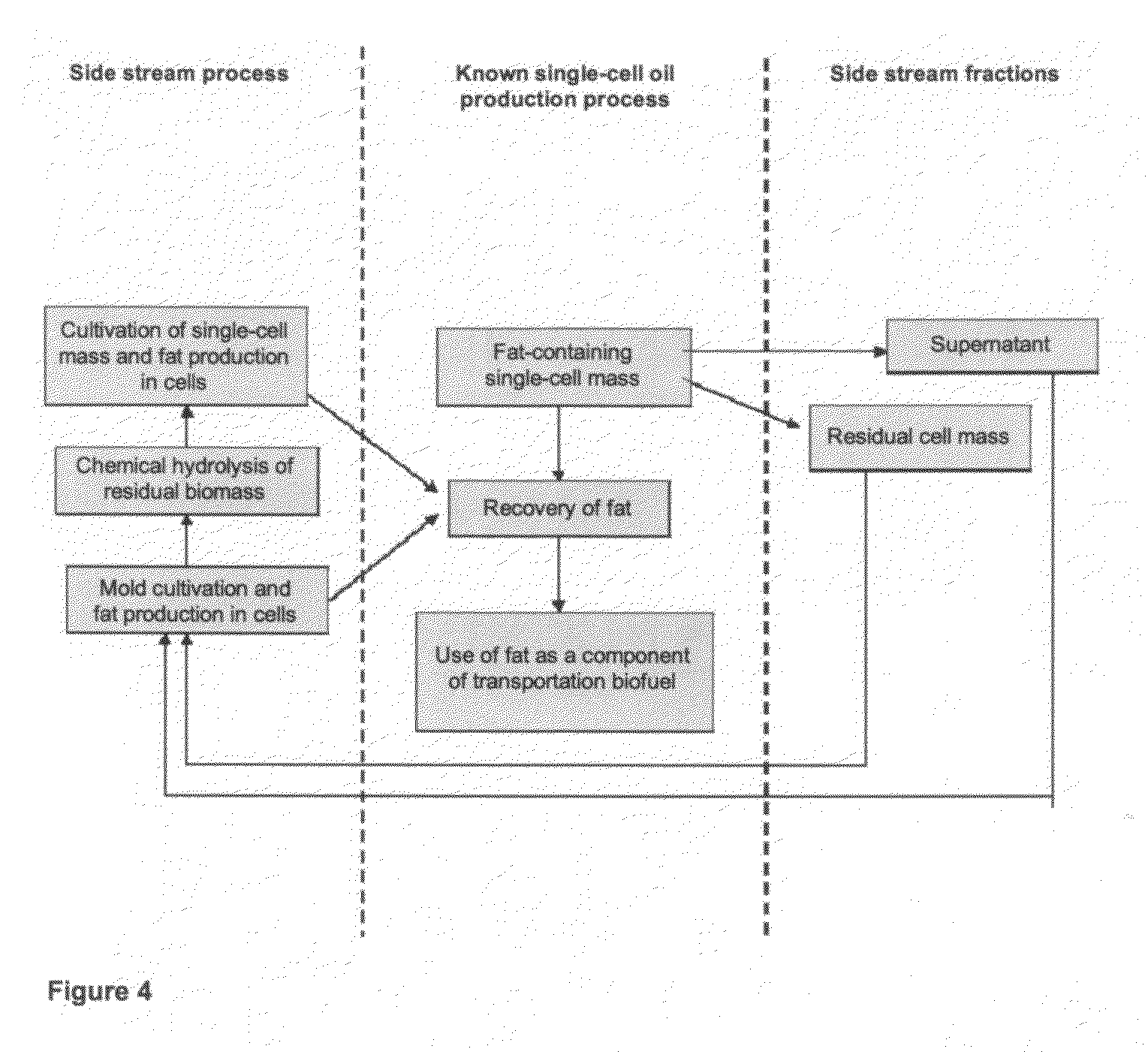Method for the production of fat
a fat and production method technology, applied in biofuels, food preparation, organic chemistry, etc., can solve the problems of unsatisfactory preconditions neither for commercially viable nor ecologically sustainable biofuel processes, prior art single-cell fat processes are quite problematic, and undermine the viability of large side stream amounts, so as to improve carbon and energy balance, reduce organic load, and reduce environmental burden
- Summary
- Abstract
- Description
- Claims
- Application Information
AI Technical Summary
Benefits of technology
Problems solved by technology
Method used
Image
Examples
example 1
[0212]It was studied how the growth of mold is influenced by a liquid residue, a supernatant, resulting from a yeast-based single-cell fat production process, as it is substituted for water in an YPD cultivation medium commonly used for mold.
[0213]The supernatant comprised a supernatant resulting from growing the yeast Lipomyces starkeyi and from fat production. The cultivation medium was sterilized by autoclaving at 120° C. for 15 min. The cultivations were conducted in 250 ml Erlenmeyer flasks with a cultivation medium of 50 ml in volume.
[0214]The effect on two mold types was assessed. For this purpose, parallel cultivation medium flasks were inoculated with 500 μl of the spore suspension Mortierella isabeffina and, respectively, parallel cultivation medium flasks with 500 μl of the spore suspension Mucor circinelloides. The cultures were incubated at a temperature of 28° C. in a shaker with a mixing speed of 160 rpm. During cultivation, the M. circinelloides cultures were supplem...
example 2
[0220]Lipomyces starkeyi yeast was used, in accordance with a known single-cell fat production process, for the production of fat and the supernatant obtained from this process was used as a mold cultivation medium. The supernatant was sterilized by autoclaving at 120° C. for 15 min. The cultivations were conducted in 250 ml Erlenmeyer flasks with a cultivation medium of 50 ml in volume.
[0221]Parallel flasks containing cultivation medium were inoculated with 500 μl of the spore suspension Mortierella isabeffina and, respectively, parallel cultivation medium flasks with 500 μl of the spore suspension Mucor circinelloides. The cultures were placed for incubation at a temperature of 28° C. in a shaker with a mixing speed of 160 rpm.
[0222]The M. circinelloides cultures were supplemented, after 2 days of incubation, with 1 g dextrose monohydrate. Respectively, the M. isabellina cultures were supplemented with 1 g dextrose monohydrate after 3 days of incubation.
[0223]After the glucose add...
example 3
[0225]The Brachiomonas submarina algal suspension, which had been cultivated heterotrophically by using glucose as a carbon source, was subjected to the extraction of cells for the recovery of single-cell fat, and the leftover cultivation liquid, a supernatant, was used for preparing a cultivation medium for mold by adjusting it to a pH value of 5.5 with NaOH. The supernatant was sterilized by autoclaving at 120° C. for 15 min.
[0226]Mortierella isabellina and Mucor circinelloides molds were used for the preparation of spore suspensions. In order to prepare a spore suspension, the germinating PDA Petri dish culture of each mold was supplemented with 9 ml sterile water, the spores being released therein by means of an angle wand. For each mold, the algal supernatant was used to prepare parallel 50 ml cultivation media which were inoculated with 500 μl of the above-mentioned spore suspension. The mold cultures were incubated at a temperature of 28° C. in a shaker with a mixing speed of...
PUM
| Property | Measurement | Unit |
|---|---|---|
| Fat content | aaaaa | aaaaa |
| Fat content | aaaaa | aaaaa |
| Fat content | aaaaa | aaaaa |
Abstract
Description
Claims
Application Information
 Login to View More
Login to View More - R&D
- Intellectual Property
- Life Sciences
- Materials
- Tech Scout
- Unparalleled Data Quality
- Higher Quality Content
- 60% Fewer Hallucinations
Browse by: Latest US Patents, China's latest patents, Technical Efficacy Thesaurus, Application Domain, Technology Topic, Popular Technical Reports.
© 2025 PatSnap. All rights reserved.Legal|Privacy policy|Modern Slavery Act Transparency Statement|Sitemap|About US| Contact US: help@patsnap.com



